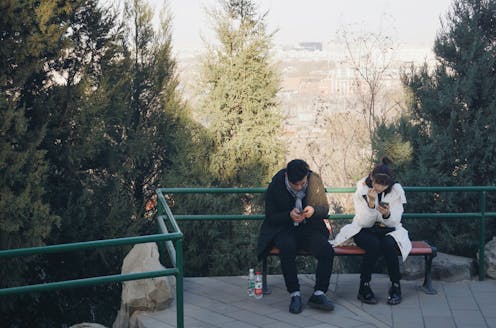
One morning in February 2021, I was woken by a WeChat call from my brother in China. Mum had died the previous night, he told me. I wasn’t shocked to hear about Mum’s death – she had been very ill for a couple of years.
In fact, for months before she died, our weekly WeChat exchanges mostly took the form of my simply looking at her on the screen, noticing subtle signs of deterioration each time. In a way, these online occasions were more for my benefit than hers. She was progressively unable to recognise or communicate with me.
In the days after her death, my brother and his wife did their best to make me feel included. They persuaded the local crematorium to let them stream the funeral event live via WeChat, so I could “be there”.
In my inner-west home in Sydney, I saw Mum’s body in the coffin. Two days later, my brother hooked me up on WeChat again so I could witness the burial of my mum’s ashes in the cemetery. Half an hour after I ended this call, I had to join a work-related Zoom meeting. Thanks to the wonders of technology, my private grief had to be sidelined.
My dad was then in his mid-eighties, but very healthy for his age. He understood I couldn’t be there, knowing what I’d have to go through to actually visit him.
Two weeks of quarantine in a hotel in the international city where I would land (Shanghai), then one more week in a hotel in my home city in a nearby province, plus one week of home isolation. I kept assuring him as soon as the travel ban was lifted, I’d go to see him.
But he died a few months after Mum: suddenly, most likely due to a heart attack. So, we went through the same ritual on WeChat a few days later – in the crematorium and in the cemetery. This time, I knew what to expect.
I still have my dad’s voice messages on my WeChat. But I still can’t bring myself to play them and hear his voice. Even now, two years after his death, it is still too raw.
I am reminded of a remark from a WeChat researcher in Hong Kong: “WeChat is being used as an archive of emotions.”

Around the same time, I noticed my experience was quite common among people in the Chinese diaspora. In the last two years, I have come across many Chinese-language blogs that narrate their experience of having to farewell their parents on WeChat because of the quarantine. They’re written by people like me: members of the Chinese diaspora now scattered in different countries – the US, Canada, Australia, Europe and elsewhere.
I wanted to write something, too, but I couldn’t bring myself to open the emotional floodgates. There was work to do and academic papers to write. My emotions had to be regulated so they wouldn’t get out of control.

But each of the many blogs I read, which circulated widely in WeChat postings, provided me with an occasion to revisit my grief. I found reading them strangely therapeutic.
Qiao Ba (his online persona) is one of these bloggers. He told me he had last seen his father in a coffin, on WeChat. Prior to his father’s death, they had talked with each other on WeChat, with his dad lying in a hospital bed. His siblings used WeChat to update him on his father’s health and Qiao Ba was even in regular touch with his father’s doctors on WeChat. After his father died, in a blog post titled “The deepest pain of first-generation migrants”, he wrote:
Because the Pause button had been hit on international travel, many people’s last, hurried visits home were effectively their final farewells to their loved ones.
Covid-19 has given rise to a new genre of diasporic Chinese writing, expressing a cocktail of feelings. These include grief, sadness, guilt – and, importantly, gratitude to our families in China, who did all the heavy lifting in caring for aged or dying parents.
This is a genre unique to first-generation migrants. And the emergence of its “connection-in-separation” trope would not have been possible without WeChat.
Read more: Friday essay: what the migrant workers who made my iPhone taught me about love
The ‘Swiss army knife’ of social media
And yet, an Australian Senate inquiry is considering submissions that propose banning WeChat in Australia.
The Senate Select Committee on Foreign Interference through Social Media is investigating the risk posed to Australia’s democracy by foreign interference through social media. A key area of its inquiry is whether to ban WeChat.
I’ve made a submission to the inquiry, with RMIT’s Professor Haiqing Yu, my WeChat co-researcher. We argue the ban would do more harm than good.
Many WeChat-using Chinese-Australians have not even heard about the proposal to ban it – but those of us who have are watching this space with mounting anxiety.
Many Australians have never used WeChat, which is owned by Chinese tech giant Tencent, and was launched – as Weixin – in 2011. The international version, WeChat, was launched the following year.
Soon, people found it nearly impossible to get by without it. In addition to being a communication and messaging platform, WeChat has dedicated functions that allow users to pay bills, book hotels and taxis, shop online and buy groceries.
WeChat is not merely an instant messaging tool, but a “super sticky” app. It has been dubbed the “Swiss army knife” of social media. Facebook, WhatsApp and other Western social media are not allowed in China. This meant the uptake of WeChat soon reached near-saturation point.
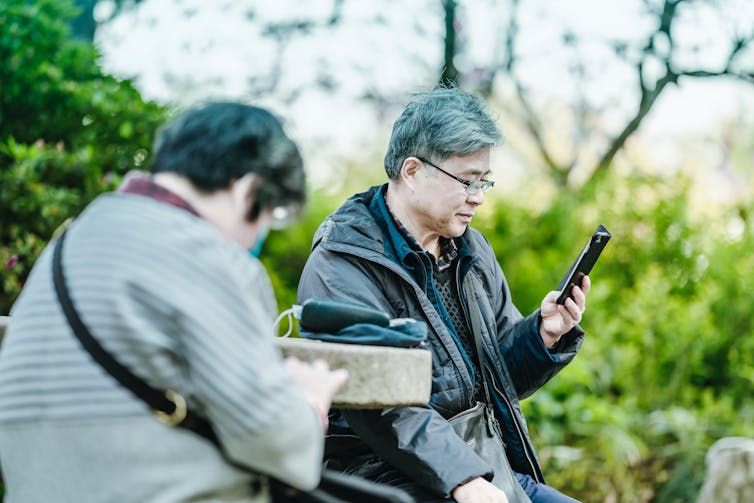
As my research with Haiqing Yu indicates, WeChat is extremely agile, versatile and resourceful. It comes with many features that resonate with traditional Chinese practices, such as sending monetary gifts (hong bao – “red envelopes”) to friends electronically.
Users have four ways of communicating on WeChat: Group Chat (in groups of up to 500 people), WeChat Moments, which allows users to post updates and share content with their circles of friends, WeChat Subscription Accounts, which allows users to publish a certain number of articles each day, and personal messaging. There’s also the recently launched WeChat Channels, which are public feeds of video and visual material, searchable through keywords and hashtags.
Spaces on WeChat are semi-private. WeChat allows users to decide who they want to be friends with in both private and group chats – and which friends they want to block from viewing their Moments. It also allows a user to find and follow any official account or channel, without any request or approval from the account holder (though you cannot unilaterally “follow” another user). And you have the option of “un-friending” anyone you have previously connected with.
To first-generation Chinese migrants in many countries, WeChat was a godsend, enabling them to stay connected with each other free of charge. Currently, there are as many as 1.3 billion users in 200 countries and regions, operating in 17 languages.
Expert witness against Trump’s proposed US ban
In August 2020, then US president Donald Trump signed executive orders prohibiting the use of Tik-Tok and WeChat in America. I was asked to write something in response to the news.
A few days later, I received an email from Clay Zhu, a San Francisco lawyer. He invited me to give expert testimony in a forthcoming legal challenge to Trump’s ban, which argued it would harm their First Amendment rights, especially freedom of speech.
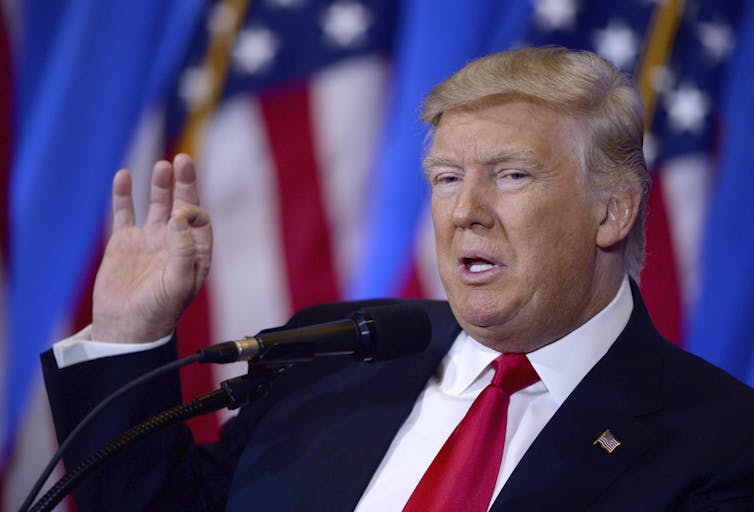
In my testimony in the US legal case, I explained that WeChat is a lifeline for members of the Chinese diasporas, especially from the People’s Republic of China. It enables them to stay in touch with family members in China. It helps them conduct business and trade. And it helps them find and maintain social networks in their new environment.
My research on WeChat started in 2018, when Haiqing Yu and I embarked on our five-year research project. We aimed to explore Chinese-language digital and social media in Australia.
We spent a lot of time interacting with people in 45 Australia-based WeChat groups over four years, from 2018-2022. We also conducted in-depth, one-on-one interviews with a dozen WeChat users, and two large surveys of first-generation migrants from the People’s Republic of China, to get a sense of the media landscape they inhabited.
In 2018, we had no inkling of the tumults and shocks that awaited Australia, China and the rest of the world. Nor did we anticipate the myriad new ways WeChat would be put to use as these events unfolded.
Our study constantly had to take into account whatever reality threw at us. While we tried to stay the course, we also needed to significantly extend our research – in several new directions.
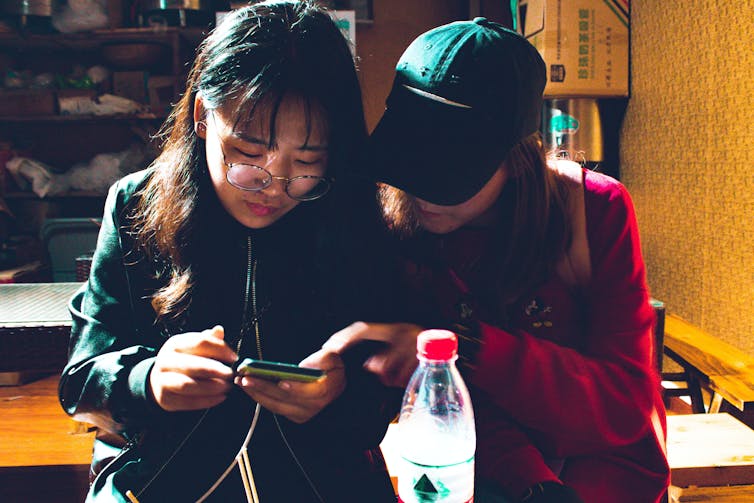
WeChat and the 2019 election
A few months before Australia’s 2019 federal election, we noticed the election had become a hot topic on WeChat. We realised WeChat was not just being used as a communication tool: it was educating new citizens about the electoral process.
Our study of the election found WeChat was being used to help people become more engaged in Australian politics. (A subsequent study of a state election also found this.) WeChat was teaching these new citizens about Australia’s political system, democratic values and electoral processes, and helping them become better-informed about their voting options.
This citizen education was made possible largely by the emergence of self-appointed opinion leaders on WeChat. These individuals seemed to be playing a crucial role in educating fellow voters and promoting informed political engagement.
There was widespread reporting of election-related disinformation being spread on WeChat during the campaign. But our observations also suggested these opinion leaders played a key role in debunking such misinformation and disinformation.
Sydney-based “XY” was one of eight opinion leaders we featured in our book, which emerged from our study. He was educated in a prestigious university in China, then went on to work in the public service. XY came to Australia in the late 1990s.
An Australian citizen since 2006, this former Chinese public servant now runs a small business in Sydney. Then in his 40s (2019), XY actively participated in a dozen politics-themed groups. Eight were Australia-based and four were US-based. (He also participated in other groups.)
XY spends a lot of time browsing Australian and international English media, such as the Australian, the Sydney Morning Herald, the Washington Post and the New York Times. While Twitter is his preferred social media platform, he uses WeChat to repost news and information from elsewhere to his chat group members.
XY became a de facto leader in many of his groups, given his grasp of mainstream news and current affairs. He was strategic about how to exert influence during the election campaign. When he was trying to shape people’s voting preferences, he did so by quoting traceable sources (like mainstream media publications) and authorities (mainstream public figures), using their words to make his own point.
For example, in March 2019, he made three posts in his WeChat groups in quick succession. The first, in Chinese, said:
The Sydney Morning Herald reported eight years ago on then Prime Minister and Liberal leader Scott Morrison’s proposal to use anti-Muslim sentiment to win votes – a claim that Morrison did not deny at the time.
His second post was a link to news.com.au journalist Malcolm Farr’s then-recent story about Morrison accusing TV presenter Waleed Aly of lying over this issue. The third post quoted a few key paragraphs from Farr’s story.
XY clearly favoured Labor over the Coalition. Farr’s piece painted an unfavourable picture of Morrison, implying he was at best inconsistent, at worst a liar. Yet, XY refrained from making judgemental statements about Morrison and the Liberals. He preferred to let Farr’s story speak for itself. Many people responded to his posts with praise or a “thumbs-up” emoji.
Read more: How Australia’s Mandarin speakers get their news
WeChat during the Black Summer bushfires
Soon after the federal election in 2019, many parts of Australia were choking with the smoke of bushfires that spread and burned for weeks. They claimed many lives, destroyed thousands of houses, and devastated millions of hectares of land and the animals on it. Many Australian individuals and community organisations donated generously to the victims and firefighters.
Chinese Australians were no exception. Many WeChat postings encouraged, organised and coordinated donations, disaster relief and recovery appeals. From this, we saw the great potential of WeChat as a platform to involve people in altruistic community initiatives.
It was in this context that the story of Ethan Wang caught our attention. Ethan was a primary-school boy living in Canberra. One day in November 2019, over breakfast, he heard his parents talking about what was on the news – 350 koalas had died in the bushfires in the Australian Capital Territory and New South Wales. With his Canberra home shrouded in smoke, Ethan decided to act. He quickly made a hand-drawn fundraising poster, found a spot in the Gungahlin Shopping Centre and started playing his violin. His poster urged passers-by to donate money to save the koalas.
Ethan was not disappointed. Shoppers lined up to make donations. Ethan’s proud parents posted pictures on WeChat of their son busking to raise money. Much to their surprise, they received enthusiastic responses and further donations from families, friends and acquaintances in China – as well as Australia.
News of Ethan’s initiative spread on WeChat, and a few days later, having finished school for the day, Ethan found a group of Canberra-based Chinese-Australian parents waiting for him at the school gate – they wanted to hand over the money they had raised in his name.
WeChat during Covid-19
The raging bushfires had just recently been brought under control when Australia was plunged into the initial phase of the Covid-19 pandemic. In December 2019, Wuhan in China went into lockdown.
Not long after that, many Chinese Australians returned to Australia, especially after the Chinese New Year (which was 25 January). Many who arrived before mandatory self-isolation guidelines came into effect (on 1 February 2020) decided to self-isolate on their arrival – despite being healthy and virus-free. They were acutely aware of community anxiety about the virus and wanted to do their bit to minimise the risk.
But self-isolation meant the supplies they needed for everyday living had to be delivered to them. In response to this challenge, a network of 300 Chinese-Australian volunteers in major Australian cities sprang into action.
They helped 600 households – and the initiative was coordinated through WeChat. Orders for groceries such as food, toilet paper and milk were taken via the app. The volunteers bought the items and delivered them to front doors or front gardens, and the householders transferred payments via WeChat. Through the entire process, there was no face-to-face interaction with those who were inside the isolated homes.
We learned from this grassroots response that WeChat could be an effective tool to mobilise and organise civic action.
Read more: Fang Fang's Wuhan diaries are a personal account of shared memory
WeChat and the Black Lives Matter movement
Across the Pacific, a nationwide political storm was brewing in the US, which was still in the grip of the pandemic. George Floyd, a Black American man, was beaten to death by police, precipitating the large-scale Black Lives Matter movement.
Before then, WeChat had mainly been associated in the US with misinformation by Trump supporters on the right. But 20-year-old Eileen Huang, a student of English at Yale University, changed that.
In June 2020, Huang published an open letter on WeChat addressing Chinese Americans of her parents’ generation. Huang observed that many Chinese Americans have long-held, deep-seated prejudices against Black people – and she called on the Chinese-American community to speak up against racism targeting Black Americans. She called for cross-racial solidarity.
Huang’s letter quickly drew widespread but polarised responses. An open letter countering Huang was soon posted on WeChat. Lin Fei, a male respondent from Huang’s parents’ generation, adopted a paternalistic tone in the letter, addressing Huang as a “child” who had been “brainwashed by lefties”.
The two letters were shared widely on WeChat, forcing an inter-generational debate across the political divide into the open. The resulting furore – and the intensity of the debate – led one commentator to say Huang’s open letter had ignited “a rare large-scale, open and direct ideological confrontation in the history of Chinese Americans”.
Back in Australia, sensing it might have profound resonances here, I followed this debate with great interest. Meanwhile, amid the global pandemic and the popular groundswell of support for George Floyd, many Australians in major cities across the nation took to the streets to voice their support for the Black Lives Matter movement.
When advised by public health authorities not to protest in public places, due to concerns about the risk of spreading COVID-19, protesters in Perth nevertheless decided to go ahead with their planned rallies. But they did not have enough masks for protesters.
When a Perth-based Chinese community heard of their problem, they took to WeChat and successfully organised the donation of 11,000 masks overnight, which they had delivered to the protesters.
WeChat is known to have spread racial prejudices. But its uses during Black Lives Matter and the pandemic show it can also be a powerful platform for civic engagement – and for mobilising positive and effective social movements.
Since our book was published, I have learned of other ways WeChat can be put to productive and creative use in Australia.
I’ve had conversations about the platform with social policy researchers in the aged care and health care sectors, as well as with individuals in business and trade. They have convinced me WeChat offers enormous potential to Australia’s social cohesion – just waiting to be tapped.
Concerns about WeChat
Despite these new insights, we are not blind to the risks and issues commonly associated with WeChat. These concerns need to be addressed seriously, and with evidence-based research.
The first major concern is WeChat’s potential threat to national security. Indeed, President Trump’s ban was based precisely on this fear.
But the US court that overturned the ban established that this fear was ungrounded: despite the numerous claims put forward by the President’s legal team, the court found there was “scant” evidence of its threat. The court promptly stayed the nationwide ban and by the middle of 2021, the newly-elected President Biden had officially withdrawn Trump’s executive orders.
A second concern is censorship and surveillance on WeChat. This is valid. Unknown to many people, WeChat, and its Chinese version, Weixin, are “two systems” that operate on “one app”.
Users who register with a Chinese mobile phone use Weixin, which is run by its Shenzhen-based parent company, Tencent. Weixin is governed by Chinese law. Users outside mainland China, who register with a non-Chinese mobile phone, use WeChat – which is operated by a Singapore-based company, WeChat International. WeChat is governed by the relevant local laws of each user’s country of residence.
WeChat and Weixin work together as a multi-functional messaging and social media app. In some spaces on the app, such as chat groups and Moments, Tencent surveils all WeChat and Weixin messages. But censorship of politically sensitive keywords and images is server-based. This only affects messages to or from Weixin users.
So, there is surveillance of WeChat messages – supposedly for the purpose of training the Weixin censorship algorithms. But there is no censorship of messages sent from one Australia-based WeChat account to another, as they don’t pass through a China-based server.
However, messages sent between an Australia-based WeChat account and a China-based Weixin account do pass through Tencent’s servers in Shenzhen. So, they are subject to surveillance and censorship.

Our study recognises Tencent’s complex surveillance and censorship regime. But it suggests political communication, or criticism of the Chinese government or the Communist Party of China, is not the main reason people in diaspora use WeChat.
Most Chinese-Australian media entrepreneurs who operate on the platform have engaged in myriad ways of resisting, evading, bypassing and criticising surveillance, censorship and other forms of political oppression. So, despite clear concerns about these matters, we have identified many creative ways Australian users engage in entrepreneurial activities and cultural self-expression on WeChat.
A third concern is that WeChat functions primarily as an instrument of the Chinese government. Our research indicates that the content of state Chinese media does occasionally get posted on WeChat. And Chinese-language media outlets in Australia that use WeChat to push their content sometimes self-censor to ensure circulation of their content (by withholding content critical of the Chinese government.)
But producers and editors at these media outlets have told us it doesn’t make business sense for them to function as mouthpieces of the Chinese government, nor to help the Chinese government push its agenda. The claim that WeChat is a “narrative machine” for the Chinese Communist Party is ill-informed, alarmist and misleading.
WeChat users in Australia are not a homogenous group. And most people are by no means easy prey for WeChat propaganda. In fact, our research has produced ample evidence suggesting most Chinese Australians are motivated by pragmatic and business decisions to use WeChat: for content production, circulation and communication.
In other words, there is a crucial distinction between WeChat being subject to Chinese authorities’ surveillance and censorship, and WeChat being an instrument of Communist Party of China propaganda.
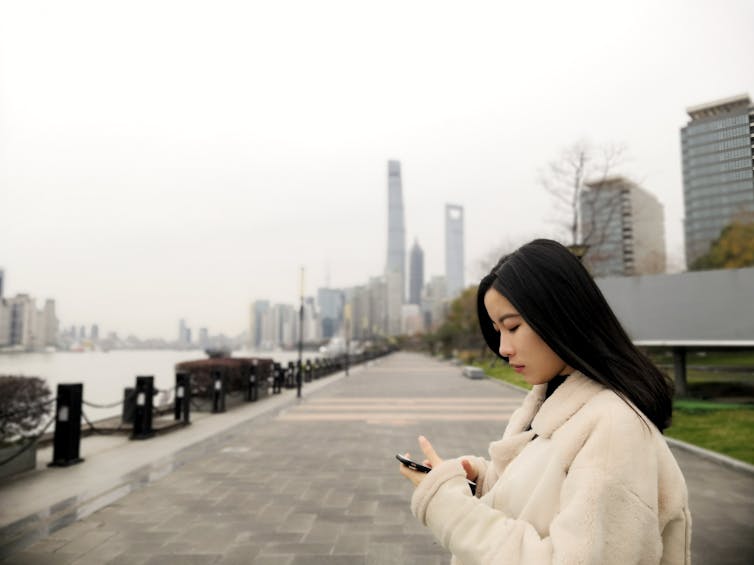
A fourth concern is that WeChat could only be bad for democracy, due to censorship and the Chinese government’s desire to push propaganda content on the platform.
Our research suggests such a view overestimates the power of the Chinese propaganda to use a single platform to influence and control its hugely diversified diasporas – of over 50 million people.
It also underestimates the agency of members of the Chinese diaspora in harnessing a social media platform and using it for a wide range of purposes that far exceed its intended range of functions. Our research has shown that, like all other media platforms, Chinese-language digital and social media are used for both democratising and anti-democratising purposes.
All these concerns warrant serious consideration. But evidence-based research is vital in investigating and assessing both the risks and the benefits of WeChat.
Recommendations
We offer two major recommendations for Australia’s policy makers.
Firstly, we believe the Australian government and regulators should recognise and acknowledge that, for the Chinese diaspora, WeChat is a necessity – not a choice. The government should actively explore the development of social media platforms that can function as viable alternatives to WeChat and can adequately address the needs of WeChat users in Australia in the long run.
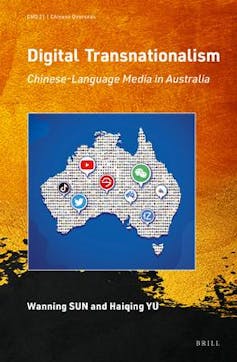
Such a solution would need to accommodate the wealth of functions WeChat offers – bearing in mind that most users want to remain closely connected with family and friends in China, where the major Western social media platforms are currently not permitted.
Secondly, we think the Australian government should try to persuade Tencent to allow its international users to freely register WeChat subscription accounts, and to ensure such accounts are not subject to Chinese censorship. Then any individual or organisation in Australia would be able to use the platform on an even playing field with Weixin-registered users, in terms of content/news production and circulation.
Michael Bien, the leading lawyer for the plaintiffs in the legal challenge against Trump’s ban, made a crucial point when he said the proposed ban
targets the Chinese American community and trampled on their First Amendment guaranteed freedoms to speak, to worship, to read and react to the press, and to organize and associate for numerous purposes.
Most users of Western social media, such as Facebook and Twitter, find ways to navigate around various content restrictions and advertising. While most of us manage to avoid being drawn in by scammers, many are not immune from the commercial and political influences that are part and parcel of using these platforms.
The fundamental difference is that these social media platforms are owned by tech giants in the free world, while WeChat is not. But citizens’ rights to freedom of expression and the exchange of information should be paramount – and need to be guaranteed.
Digital Transnationalism: Chinese-Language Media in Australia is published by Wanning Sun and Haiqing Yu (Brill).
This book project was funded by an Australian Research Council Discovery Grant, “Chinese-language Digital/Social Media in Australia: Rethinking Soft Power” (DP180100663).
This article was originally published on The Conversation. Read the original article.







